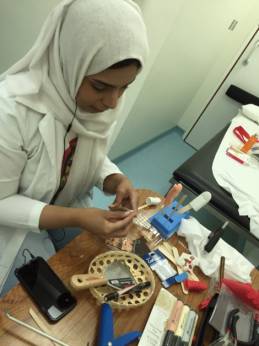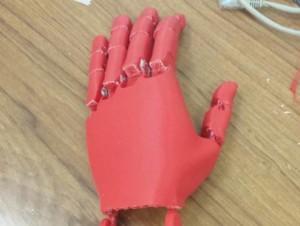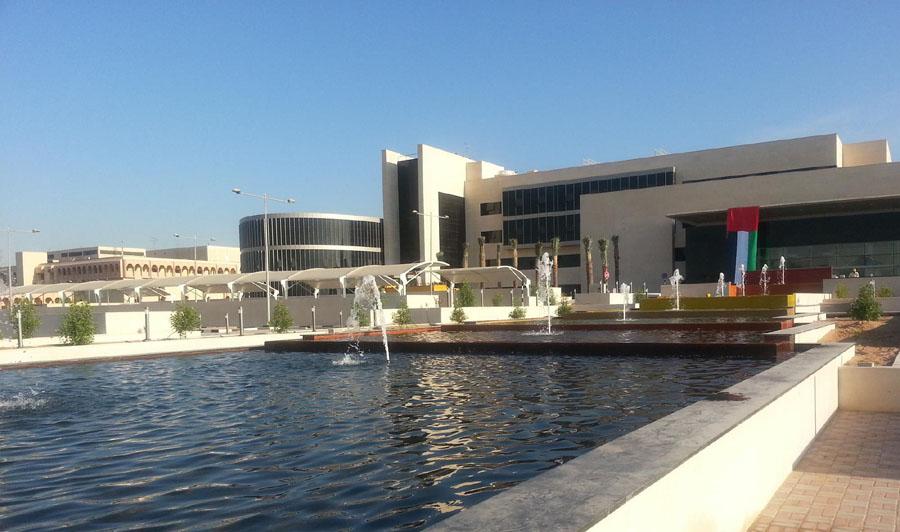UAE Hospital First in the Middle East to Use 3D Printed Models: Reassuring Patients About to Undergo Plastic Surgery
Like the rest of the medical industry, cosmetic surgery has been significantly advanced in recent years thanks to 3D printing. People who have lost noses, ears, or even their entire faces in horrific accidents can now have their features, and lives, restored in complex procedures that rely heavily on 3D modeling and printing. Despite the capabilities of the technology, however, a reconstruction of facial features is terrifying and traumatic. Imagine going into surgery, unsure of what you’re going to look like when you wake up. Doctors can provide sketches to give patients some idea of what their reconstructed faces will look like, but it’s still only an approximation.
Surgeons at Al Qassimi Hospital, located in Sharjah, United Arab Emirates, have been using 3D printed models to give patients much more accurate representations of what they can expect to see in the mirror post-surgery. Using CT scans, doctors are able to create accurate models of the skulls of even the most severely disfigured patients. From there, it’s easy to 3D print a model of the patient’s unique face shape. Printing a model of a skull takes about three days, while models of other body parts such as hands can be printed in only an hour.“The 3D prints that are created as the surgical model can help all plastic surgery patients feel a greater sense of confidence in their potential results,” plastic surgeon Dr. Mesha’al Al Nabouda told Gulf News. “Whether a person is coming in for a reconstruction or rejuvenation, I can provide exceptional precision as a benefit of this technology. It is an exciting time to work in the plastic surgery field with this type of advancement at our fingertips.”
 According to Dr. Saqr Al Mulla, deputy CEO and head of plastic surgery at Al Qassimi Hospital, the United Arab Emirates is the first country in the Middle East to use 3D printing technology for medical purposes. The UAE has been miles ahead of most countries, in fact, when it comes to innovative uses of 3D printing in all industries. Dubai is funneling a significant amount of money into the development of 3D printing technologies to reduce environmental damage, and the city also intends to construct an entirely 3D printed office building in the near future. It’s no surprise that the UAE should be leading the fray in medical 3D printing, as well.
According to Dr. Saqr Al Mulla, deputy CEO and head of plastic surgery at Al Qassimi Hospital, the United Arab Emirates is the first country in the Middle East to use 3D printing technology for medical purposes. The UAE has been miles ahead of most countries, in fact, when it comes to innovative uses of 3D printing in all industries. Dubai is funneling a significant amount of money into the development of 3D printing technologies to reduce environmental damage, and the city also intends to construct an entirely 3D printed office building in the near future. It’s no surprise that the UAE should be leading the fray in medical 3D printing, as well.
While the cosmetic surgery industry will perhaps always be associated with people who are dissatisfied with the faces they were born with, it should be better known for helping people who have lost the features they were born with, and just want them back. Those are the people that Dr. Al Mulla is most eager to help using the new technology.
“I enjoyed working with reconstruction patients because it is incredibly satisfying to make such a big difference in their lives,” he said.
Discuss this article in the Hospital 3D Printing forum on 3DPB.com.
Subscribe to Our Email Newsletter
Stay up-to-date on all the latest news from the 3D printing industry and receive information and offers from third party vendors.
You May Also Like
Industrial Giant Ingersoll Rand Leads $19M Round Backing Inkbit’s AI-Driven 3D Printing
Inkbit, the Massachusetts-based original equipment manufacturer (OEM) of multi-material, AI-integrated 3D printers, has closed a $19 million financing round. Ingersoll Rand, a US giant in the industrial equipment sector, led...
3D Printing Unpeeled: Digital FDM Filament for Functional Gradients
Just published in Nature, a paper by a Seoul National University team looks at “3D printing with a 3D printed digital material filament for programming functional gradients.” Sang-Joon Ahn, Howon...
3D Printing Unpeeled: $5000 Cold Spray 3D Printer, Roland DGA & Living Materials
The AeroForge is a $5000 cold spray metal printer for copper made by a student team at Rice University. In a paper for ACS Central Science a team from Nanjing...
3D Printing News Briefs, April 27, 2024: Research, Digital Dentistry, Cycling, & More
We’re starting today’s 3D Printing News Briefs with some research into 3D printed luminescent quantum-dot polymer architectures and free-form laser beam shaping, and then on to an open source 4-axis...


































